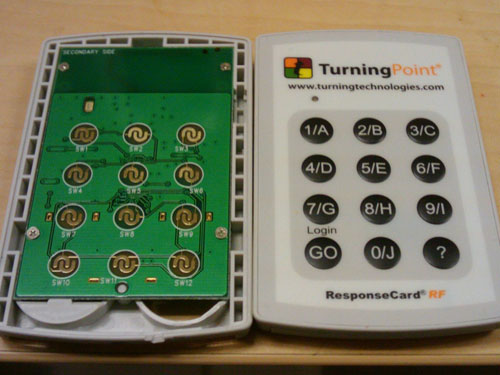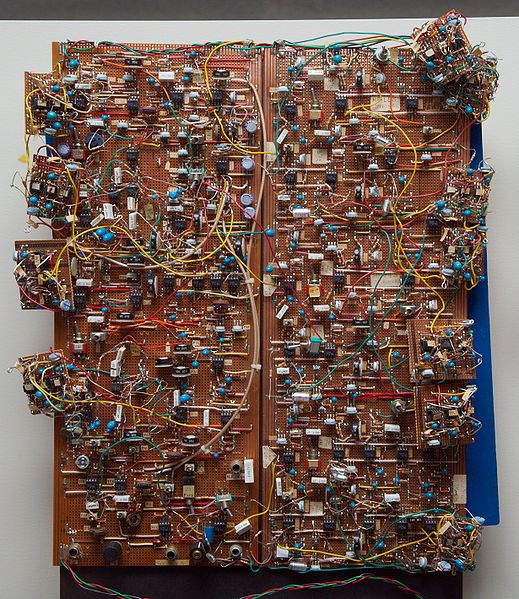[Wikipedia: click for full size]
Tag Archives: link
Photo Kiosks Infecting USB Devices
Here’s another reason why I think dedicated kiosks like these should never run Windows.
… has Windows-based Fuji photo kiosks in at least some of its stores that don’t run antivirus software, and are therefore spreading infections… via customers’ USB storage devices.
The same problem occurs with shared computers in our school’s lab computers – people come in with their thumbdrives and use it to save their files, but at the same time the virus on the drive autoruns.
Reverse-engineering the Clicker
A few semesters back, our school started trial runs to use these “clickers” as well. At that time I was thinking of cracking it open to see what makes it tick, as well as evil plans like trying to impersonate other clickers or sniffing what other people’s responses were.
I only managed to peel back a bit of the plastic in front, but since the clicker was brand-new and I had to return it in a good condition, I didn’t dare to proceed any further than that.
 [Photo stolen from Travis Goodspeed]
[Photo stolen from Travis Goodspeed]
Last night I came across this blog entry to reverse-engineer it. Since all the hard work has been done, it looks quite feasible to just buy one of these Nordic RF chips and attempt to listen in on the responses.
At our institution, each of the venues have been allocated a particular channel and the signage is displayed prominently at the front or side of the lecture theatre or classroom. It’s not hard to find a session to sit in and start sniffing.
7% Solution
This is an interesting read. I, too, just assumed the ±10% included the whole range and it would be of some random distribution.
“Design your circuit to use values that lie 7% away from the nominal standard values, either higher or lower, and you’ll find plenty of those in the bins when you do your hand selection.”

